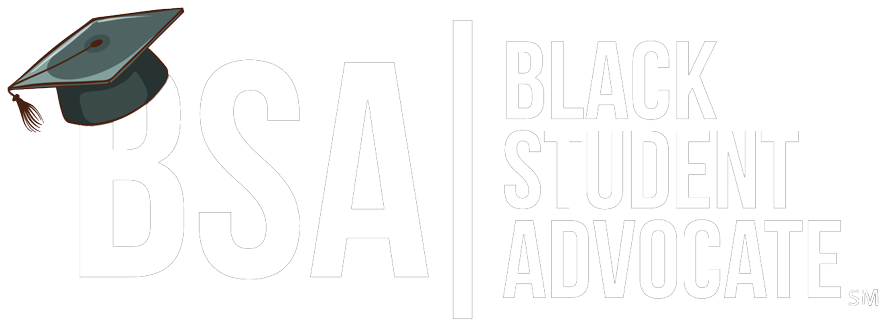In today’s racially and culturally diverse learning environments, addressing the issue of anti racism in the classroom is no longer optional—it’s essential. Schools are microcosms of society, and the systemic racism that exists in the broader world can and does manifest within classroom walls. While efforts to improve equity have often focused on broader policy or training sessions, the real transformation happens when anti-racist principles are embedded directly into the curriculum and classroom practices.
As the article “Designing for Anti-Racism in Schools: Cultivating Ethical Justice-Oriented Learning Environments” suggests, there’s a growing movement calling for a reimagination of not just what we teach, but how we teach. It’s a call to move beyond inclusion and toward a pedagogy of liberation—where educators and students actively deconstruct racist norms and co-create a classroom rooted in equity, dignity, and justice.
This blog by The Black Student Advocate Network aims to guide educators, administrators, and advocates on the path from theoretical commitment to practical application. We’ll explore how curriculum design, classroom strategies, and community engagement can come together to promote anti racism in the classroom—for real, lasting change.
1. Understanding Anti-Racism in Education: Moving Beyond Diversity and Inclusion
Anti-racism is not a buzzword—it’s a philosophy and practice that seeks to actively identify and dismantle racism in all forms. In the classroom, this means more than celebrating Black History Month or having a multicultural day. True anti-racism:
- Challenges the Eurocentric foundations of mainstream curricula.
- Acknowledges the historical and ongoing impacts of colonization, slavery, and segregation.
- Addresses structural inequalities that influence student achievement and access.
- Encourages critical thinking about race, power, and privilege.
Unlike “diversity” or “inclusion,” which can sometimes center comfort over justice, anti-racism demands confrontation with uncomfortable truths. It requires schools to not only welcome Black and Brown students but to transform systems that disadvantage them.
Educators must first understand their own positionality—how race, class, and culture inform their teaching. They must also explore how their curricula may unknowingly perpetuate stereotypes or marginalize voices. This foundational self-awareness is the first step toward anti-racism in the classroom.
2. Rewriting the Curriculum: Decentering Whiteness and Elevating Marginalized Voices
Curriculum is not neutral—it reflects cultural, historical, and political values. For decades, American school curricula have largely centered white, Western, and male perspectives. This erasure and marginalization of Black, Indigenous, and People of Color (BIPOC) perspectives reinforces white supremacy culture in subtle yet powerful ways.
Designing for anti-racism means:
- Revising reading lists to include authors of color and texts that reflect the lived experiences of diverse students.
- Teaching critical race theory, ethnic studies, and historically accurate accounts of slavery, civil rights movements, and Indigenous histories.
- Challenging mythologies of meritocracy and colorblindness.
- Incorporating project-based learning that allows students to explore themes like social justice, identity, and resistance.
For example, in an English class, educators might move from teaching only Shakespeare to including writers like James Baldwin, Toni Morrison, or Chimamanda Ngozi Adichie. In U.S. History, teachers can explore the impact of redlining, police brutality, and voter suppression as ongoing legacies of systemic racism.
By doing this, students of color see themselves reflected in the content, and all students gain a more truthful, nuanced understanding of the world.
3. Creating a Justice-Oriented Classroom Culture
Even the most anti-racist curriculum can fall flat in a classroom that doesn’t actively uphold equity in practice. Teachers must intentionally foster an environment where every student feels seen, heard, and valued. This means:
- Setting norms around respectful dialogue and naming microaggressions when they occur.
- Ensuring student voice is central to decision-making and classroom discussions.
- Practicing restorative justice rather than punitive discipline, which disproportionately affects Black students.
- Examining classroom participation norms (who speaks, who is called on) and interrupting patterns of bias.
For instance, consider the impact of something as routine as seating charts or discipline referrals. Are certain students—particularly Black boys—being disproportionately disciplined? Are students of color being tracked into remedial classes or discouraged from AP/honors tracks?
A justice-oriented classroom isn’t just a safe space—it’s a brave space, where uncomfortable conversations are welcomed, and accountability is mutual. Teachers must model vulnerability, humility, and a willingness to unlearn harmful practices.
4. Engaging Families and Communities as Co-Designers
Anti-racism in the classroom cannot happen in isolation from the community. Black, Brown, and Indigenous families often feel alienated by school systems that have historically excluded them from meaningful decision-making.
A justice-oriented approach involves:
- Inviting families to help shape curriculum and classroom culture.
- Creating space for community storytelling, cultural events, and intergenerational dialogue.
- Partnering with local organizations, activists, and elders to enrich student learning with real-world connections.
- Hosting listening sessions with families to identify barriers to student success and co-create solutions.
The classroom must be viewed as part of a larger ecosystem. When educators collaborate with parents, churches, advocacy groups, and cultural institutions, they help bridge the gap between school and society, building a more holistic and liberatory educational experience.
5. Supporting Teachers with Ongoing Anti-Racist Professional Development
Teachers cannot give what they do not have. Expecting educators to implement anti-racism in the classroom without the training, tools, and support to do so is a setup for failure.
Professional development must:
- Move beyond “one and done” workshops toward ongoing, reflective practice.
- Provide racial literacy training, so educators understand historical and systemic contexts.
- Facilitate affinity groups for educators of color and racial caucusing for white teachers to process their biases.
- Offer coaching models that help teachers apply anti-racist practices to curriculum, classroom management, and student relationships.
Crucially, school districts must fund and prioritize this development—not as an afterthought, but as a cornerstone of educational excellence. Teaching anti-racism is complex emotional labor. Teachers must be supported through collective care, shared learning, and sustained commitment.
6. Measuring What Matters: Rethinking Assessment and Success
Standardized testing has long been criticized for racial bias and cultural irrelevance. Traditional measures of “achievement” often reflect white, middle-class norms, overlooking the talents and intelligence of students from diverse backgrounds.
Designing for anti-racism means reimagining how we define and measure success:
- Valuing cultural knowledge, emotional intelligence, and social awareness.
- Using performance-based assessments, portfolios, and student self-assessments.
- Prioritizing collaborative problem-solving, storytelling, and real-world applications.
- Analyzing data through a racial equity lens—Who is succeeding? Who is struggling? Why?
By aligning assessment with justice-oriented pedagogy, educators can ensure they are uplifting rather than limiting student potential. When students are empowered to define success on their own terms, learning becomes not only more inclusive, but more meaningful.
Conclusion
Anti racism in the classroom is not a single lesson plan, a checkbox, or a unit of study. It is a radical reimagining of what education can be—an act of love, resistance, and justice.
From curriculum choices to classroom management, from professional development to community collaboration, every layer of the school experience must be re-examined through an anti-racist lens. As the article from Springer suggests, this is not about fixing individual “bad apples,” but about redesigning the entire orchard.
At The Black Student Advocate Network, we believe that every student deserves an education that honors their humanity, amplifies their voice, and equips them to change the world. But that future begins with us—educators, parents, advocates—choosing to do the hard work of unlearning, relearning, and co-creating something better.







Share This Page